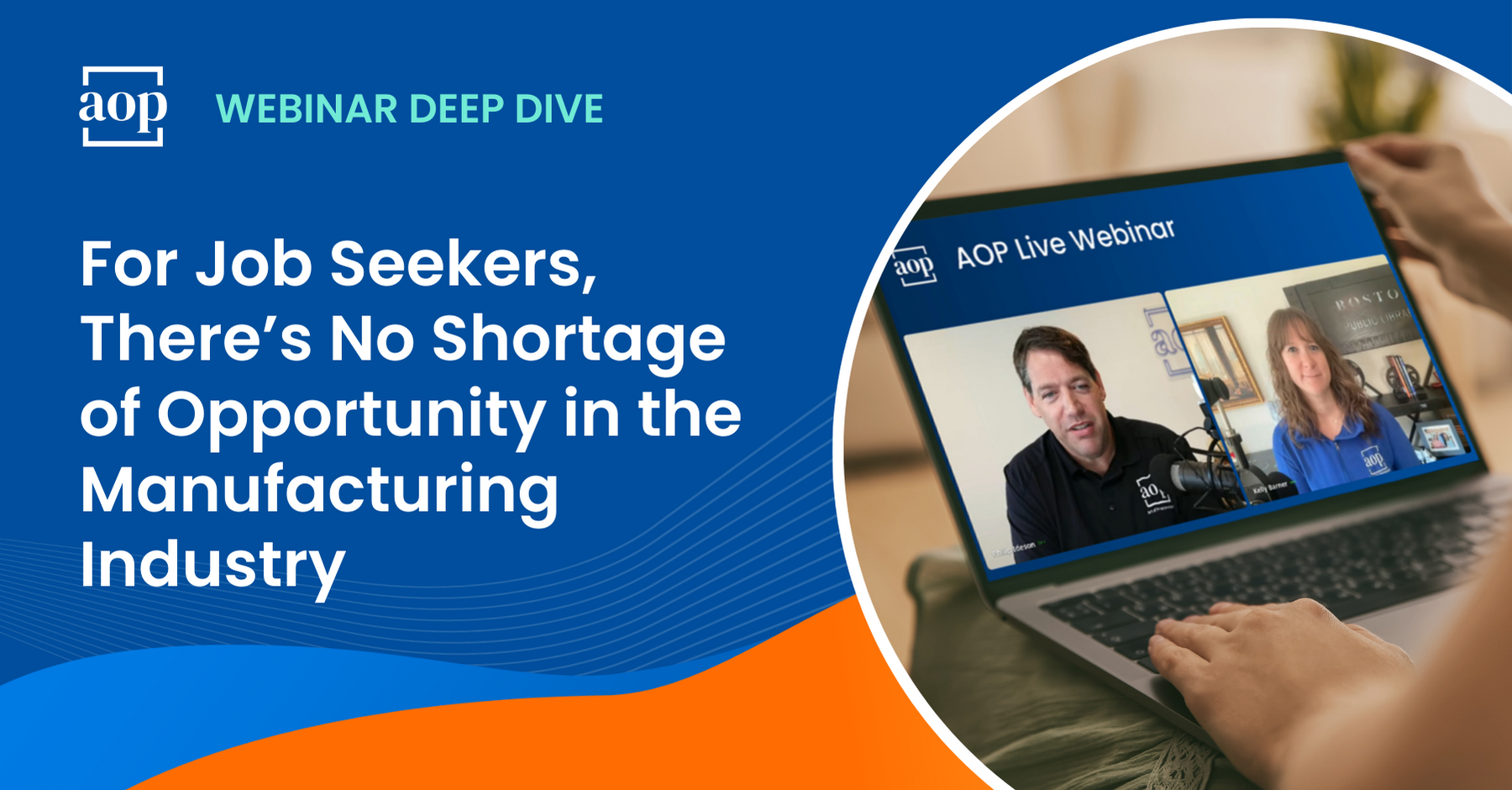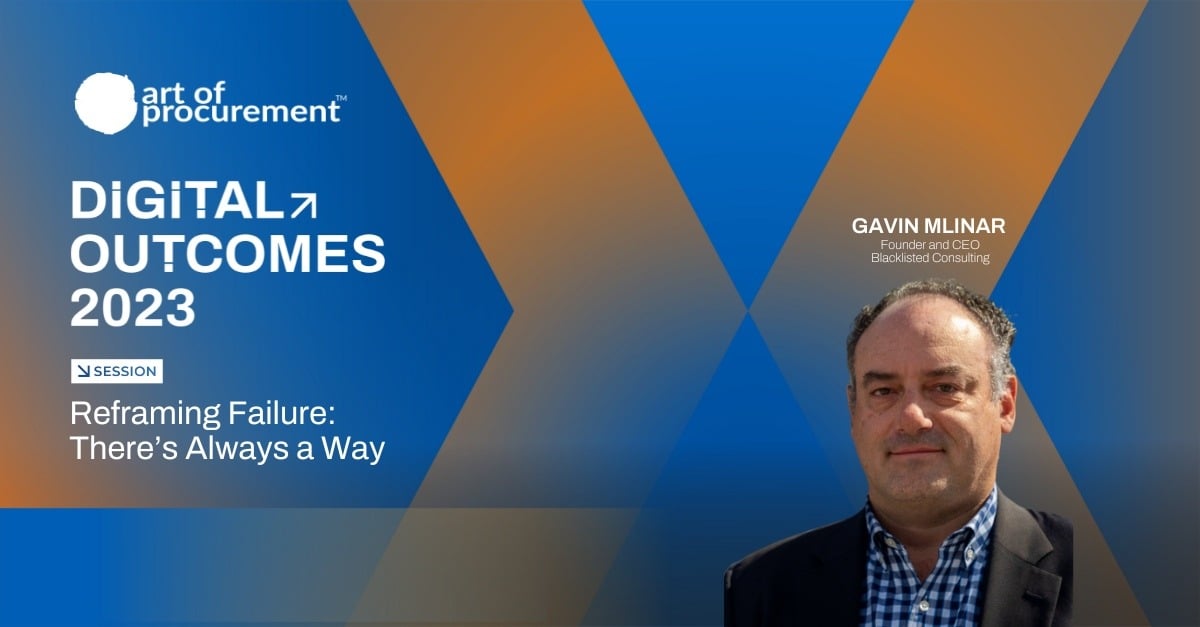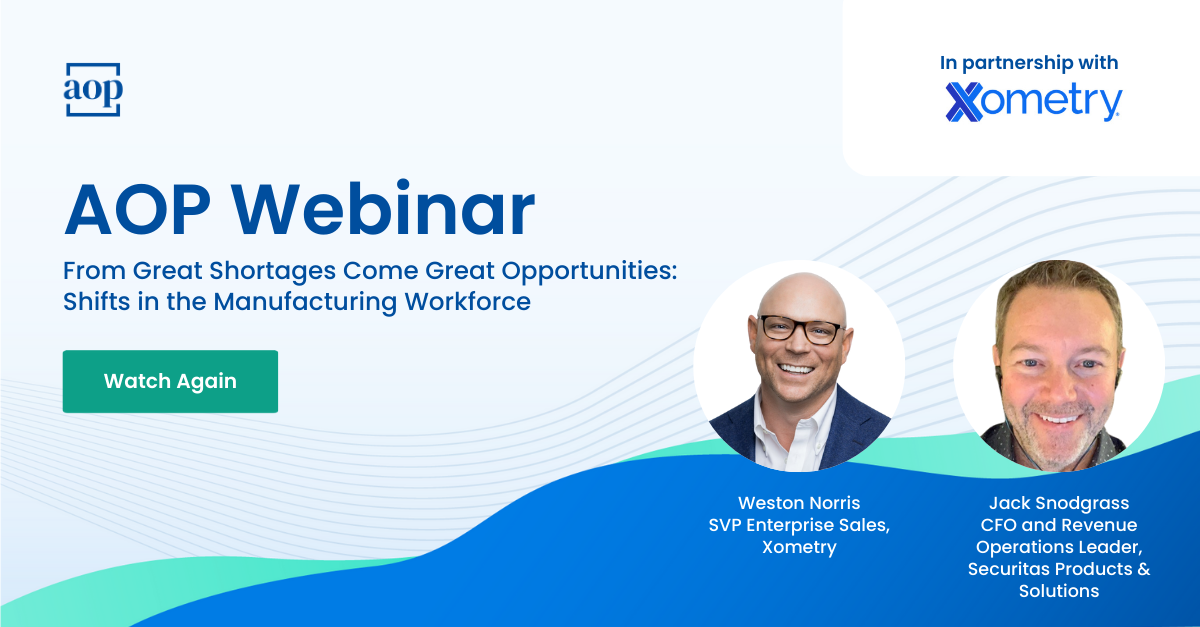3 min read
For Job Seekers, There’s No Shortage of Opportunity in the Manufacturing Industry
Kelly Barner : April 17, 2024

The U.S. manufacturing industry is in the midst of a serious talent shortage, with estimates that around 600,000 jobs are currently unfilled. For current job seekers or anyone considering entering the market, the manufacturing industry is a gold mine of career opportunities, but to attract skilled talent many companies will have to overcome outdated perceptions of the industry and keep up with evolving labor market trends.
To better understand what is driving the talent shortage in manufacturing – as well as the opportunities for job seekers and potential new hires – Kelly Barner recently moderated an AOP Webinar with Weston Norris, SVP of Enterprise Sales at Xometry, and Jack Snodgrass, CFO and Revenue Operations Leader at Securitas Products & Solutions. They discussed what is driving the current shortage, how companies as well as job seekers can leverage this to their advantage, and ultimately why manufacturing offers some of the best career paths and opportunities for growth.
Let’s start with some of their key takeaways.
What’s behind manufacturing’s talent shortage?
According to Weston, the manufacturing industry’s diminishing workforce can be generally attributed to three main drivers: 1) an aging workforce 2) negative stereotypes held by early-career workers, and 3) competition for the same talent from industries like technology, medical, or biotech.
“There are tremendous opportunities for advancement in manufacturing that you would find in other organizations but could take you twice as long to achieve,” said Weston. As one generation exits the business and heads for retirement, Weston says manufacturing companies have to find a way to attract new skilled labor to replenish the workforce and also step into new roles being created as a result of emerging technologies.
“There is a perception issue we have to address. When you’re a kid coming out of college and you mention manufacturing, I think you assume hard hats and steel-toe boots and maybe working on an oil rig. But that’s not the case today. It’s very much technology-led.”
Attracting the Next Generation of Manufacturing Talent
Educating up-and-coming manufacturing employees on the realities of the industry – which is typically much more technology-forward and filled with growth opportunities than they assume – and dispelling outdated misconceptions about the types of jobs available is only half the battle.
For manufacturing companies to start attracting skilled labor, Jack says the conversation goes well beyond wages and benefits. When companies clearly communicate their purpose, invest in upskilling and long-term career development, provide flexible career paths and opportunities for advancement, create an open dialogue with employees about what matters most to them, and assure workers that their physical and mental wellbeing is top priority, they will be able to attract and retain the right talent and reduce turnover, which comes at a high cost to the business.
“We need to make sure that these young people we’re trying to bring into those jobs understand we are a purpose-driven organization,” said Jack. “It’s important for people to care about the company they’re putting all this sweat and tears into and to feel good about what they do on a daily basis, to know it’s adding value somewhere in the world. I think that’s important for people.”
Leaning In to Manufacturing’s Value and Purpose
Jack and Weston both agree that one of the ways manufacturing employers can weather the tight labor market and find the right talent is to leverage this purpose-driven aspect of a career in manufacturing.
The manufacturing industry is really exciting, said Weston, but some early-career job seekers might not make the connection between a functional role in manufacturing and a wider contribution to humanity and are instead put off by outdated perceptions about what manufacturing once was.
“A career in manufacturing is behind-the-scenes in that you get to watch what goes into solving our world’s problems and how we’re solving the overall existential crisis we have from world hunger and other things that are being worked on every day,” he pointed out. “We get to be the tip of the spear from that perspective.”
The opportunities in the space are abundant. From entry-level to technical, highly-skilled roles, there is a tremendous amount of opportunity for employees to enter the industry or grow their existing careers. Employers simply need to get more sophisticated at communicating the company’s mission and purpose and telling the kind of stories that will resonate with and attract a new generation of workers.
“I love that our customers take something from a print – an idea, a design, something creative – and they are physically making that asset, and they are making it with us,” Weston said of working at Xometry. “That asset goes to space. It goes miles underwater. It goes into the human body. We get to go walk all the factory floors and be involved in that process. As a company, it is really fascinating, and if that’s where your interest lies, there are huge opportunities like that right now with manufacturing facilities all around the country.”
Click here to watch a full replay of the AOP Live Webinar on demand.




